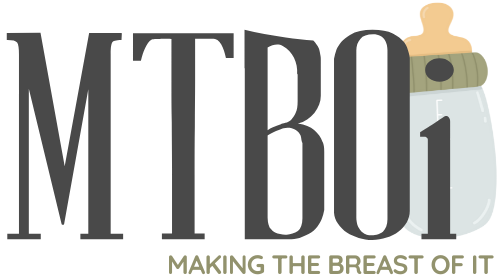When it comes to preventing pregnancy, many women are concerned about the side effects of hormonal contraceptives or just prefer a natural approach. This guide focuses on five effective, non-pharmaceutical ways to prevent pregnancy.
It’s designed for those looking for alternatives to traditional birth control methods, offering clear, practical advice on how to use each method safely and effectively.
1. Natural Family Planning (NFP)
Natural Family Planning (NFP) is a birth control method that does not involve chemicals or physical devices but relies on the observation and interpretation of various fertility indicators. NFP involves identifying the fertile window in the menstrual cycle to either avoid or achieve pregnancy.
It requires a thorough understanding of the female reproductive system and a commitment to daily monitoring and record-keeping. The effectiveness of NFP hinges on the accuracy of tracking and the discipline to abstain from or use other forms of birth control during the fertile period.
This method has evolved, with modern technology offerings tools like digital thermometers and fertility tracking apps to aid in precise tracking.
Key Points
- Fertility Awareness: This involves tracking the menstrual cycle over several months to identify patterns in fertility. It’s crucial to understand the phases of the menstrual cycle and how they affect fertility.
- Basal Body Temperature (BBT): By measuring body temperature at the same time each morning before any activity, women can notice a slight but consistent rise in temperature after ovulation, indicating a less fertile phase.
- Cervical Mucus Method: This involves observing changes in cervical mucus throughout the menstrual cycle. The presence of clear, stretchy mucus typically indicates ovulation and a higher chance of conception.
Effectiveness and Considerations
When practiced consistently and correctly, NFP can be between 75-99% effective, comparable to many conventional birth control methods. This method demands a high level of commitment and is less effective for those with irregular menstrual cycles.
There’s also a need for education and training in accurately interpreting fertility signs.
2. Herbal Contraceptives
Historically, various cultures have turned to herbal remedies for family planning, and even today, these practices continue in different parts of the world. Herbal contraceptives, though often shrouded in anecdotal evidence, have been part of traditional medicine for centuries.
Their effectiveness varies, and scientific studies on many of these herbs are limited. However, they remain a topic of interest for those seeking natural contraceptive methods. It’s essential to approach herbal contraceptives with caution, considering potential side effects and interactions with other medications.
Neem
- External Use: Neem oil is commonly used as a spermicide. Apply it in the vagina before intercourse as a barrier method. It is believed to kill sperm on contact.
- Internal Use: Neem leaves can be consumed in the form of tea or capsules. It is thought that regular consumption can reduce fertility over time, but it’s essential to consult with a healthcare provider for the correct dosage and potential side effects.
Queen Anne’s Lace (Wild Carrot)

The seeds of Queen Anne’s Lace can be used as an emergency contraceptive. Chew a teaspoon of the seeds within 8 hours after unprotected intercourse, and continue once daily for up to seven days. The seeds are believed to prevent pregnancy by disrupting the implantation process.
The seeds can be ground into a powder or taken whole. They can be mixed with water or added to food.
Smartweed
- Tea Preparation: One common way to use Smartweed is by making tea from its leaves. Steep the leaves in hot water for several minutes and drink the tea shortly after unprotected intercourse.
- Regular Consumption: Some believe that regular consumption of Smartweed tea can act as a long-term contraceptive, though scientific evidence is limited.
- Dosage Caution: The exact dosage for contraceptive purposes is not well established. It’s important to research and consult with a healthcare provider to ensure safe consumption.
Effectiveness and Considerations
The effectiveness of herbal contraceptives is not consistent and varies greatly. They are not as reliable as modern birth control methods and should be used with a thorough understanding of potential risks.
There is a risk of side effects, and certain herbs can interact negatively with other medications. It’s crucial to consult with a healthcare provider before using any herbal contraceptive.
3. Lactational Amenorrhea Method (LAM)
The Lactational Amenorrhea Method, or LAM, is a natural birth control method based on the body’s natural response to breastfeeding. This method relies on the fact that exclusive breastfeeding often leads to temporary postpartum infertility.
However, for LAM to be effective, certain strict criteria must be met, including the frequency of breastfeeding and the age of the infant. LAM is a temporary method and is only effective for up to six months postpartum or until the woman’s menstrual cycle returns.
Key Points
- Breastfeeding Frequency: To maintain the contraceptive effect of LAM, a mother must breastfeed her baby at least every four hours during the day and every six hours at night.
- Exclusivity: The baby must be exclusively breastfed without supplementation with formula or solid foods, as this can affect the mother’s hormonal balance and fertility.
- Duration: LAM is generally effective for up to six months after childbirth, but its effectiveness decreases as the baby grows and starts to require additional nutrition.
Effectiveness and Considerations
LAM can be about 98% effective when all the conditions are strictly met, making it a viable short-term natural contraceptive method. Its effectiveness is limited to the immediate postpartum period and requires strict adherence to the breastfeeding schedule.
It’s also important to note that LAM offers no protection against sexually transmitted infections.
4. Barrier Methods: Diaphragm and Cervical Cap
Although they don’t fit into the herbal or behavioral categories of natural birth control, barrier methods like the diaphragm and cervical cap are important to mention. They provide a physical barrier to prevent sperm from reaching the egg, offering a non-hormonal and reversible method of birth control.
These methods have been used for decades and are especially appealing to those who prefer to avoid hormonal contraceptives. Both the diaphragm and cervical cap are inserted into the vagina and require proper fitting and instruction from a healthcare provider for effective use.
They are often used in conjunction with spermicide to increase their effectiveness.
Key Points
Diaphragm: This flexible cup is inserted into the vagina to cover the cervix before intercourse. It blocks sperm from entering the uterus and should be used with spermicide to kill any sperm that comes into contact with the diaphragm.
Cervical Cap: Smaller than the diaphragm, the cervical cap is also inserted into the vagina but fits snugly over the cervix. Like the diaphragm, it should be used with spermicide.
Spermicide Use: Spermicides are chemicals that immobilize or kill sperm. When used with a diaphragm or cervical cap, they significantly increase the effectiveness of these barrier methods.
Effectiveness and Considerations
The diaphragm is about 88% effective, and the effectiveness of the cervical cap ranges from 71% to 86%, depending on whether the woman has given birth. Both methods require a visit to a healthcare provider for fitting and instructions.
They must be inserted before intercourse and left in place for several hours after, which requires planning and can interrupt spontaneity.
5. Withdrawal Method (Coitus Interruptus)
The withdrawal method, also known as coitus interruptus, is one of the oldest forms of birth control. This method involves the male partner withdrawing his penis from the vagina before ejaculation to prevent sperm from entering the uterus.
While it may seem simple, it requires great self-control, experience, and trust between partners. The effectiveness of the withdrawal method can be lower than other methods because it relies heavily on the male partner’s ability to withdraw in time.
Additionally, pre-ejaculate fluid, which can be released before ejaculation, may contain sperm and can lead to pregnancy.
Key Points
- Timing: Precise timing and control are crucial for the withdrawal method to be effective. The male partner must withdraw his penis from the vagina before ejaculation every time during intercourse.
- Pre-ejaculate Fluids: Studies have shown that pre-ejaculate can contain sperm, though in smaller quantities than ejaculate. This presents a risk for pregnancy even with perfect use of the method.
- Trust and Communication: Effective use of the withdrawal method depends on open communication, trust, and experience between partners.
Effectiveness and Considerations
With typical use, the withdrawal method is about 78% effective. The effectiveness can vary greatly depending on the male partner’s control and experience. This method does not protect against sexually transmitted infections and is less reliable than other contraceptive methods.
It also places the burden of birth control primarily on the male partner.
FAQs
Can stress or lifestyle changes affect the effectiveness of Natural Family Planning (NFP)?
Yes, stress and lifestyle changes can significantly impact the effectiveness of NFP. Stress can alter menstrual cycles, making it harder to predict fertile windows accurately. Lifestyle changes like varying sleep patterns, diet, or exercise can also affect hormonal balance and menstrual regularity, impacting the reliability of NFP.
Are there any long-term health effects of using herbal contraceptives?
The long-term health effects of using herbal contraceptives are not well-documented, mainly due to a lack of extensive scientific research. While some herbs have been used traditionally for birth control, their long-term impact on health is largely unknown.
It’s essential to consult a healthcare professional before using any herbal contraceptive.
How does breastfeeding as a contraceptive method affect the baby’s health?
Breastfeeding as a contraceptive (LAM) typically has positive effects on the baby’s health. It ensures that the baby receives adequate nutrition and benefits from the immune-boosting properties of breast milk.
The baby’s nutritional needs must be met as they grow, which may require supplemental feeding, especially after six months.
Can the diaphragm or cervical cap cause discomfort or health issues?
Some women may experience discomfort when using a diaphragm or cervical cap, especially if it’s not fitted correctly. There’s also a small risk of urinary tract infections or vaginal irritation. In rare cases, if left in for too long, it can lead to Toxic Shock Syndrome.
Proper fitting by a healthcare provider and following usage guidelines can minimize these risks.
Is there a way to improve the effectiveness of the withdrawal method?
While the withdrawal method’s effectiveness primarily depends on the male partner’s ability to withdraw in time, its effectiveness can be somewhat improved with practice and increased awareness of bodily cues.
However, even with perfect use, there is still a risk of pregnancy due to pre-ejaculate fluids. Combining withdrawal with another method, like fertility awareness, can offer added protection.
Summary
When it comes to birth control, the most suitable method varies from person to person, depending on individual health, lifestyle, and comfort levels. Natural methods, as explored in this article, offer alternatives to hormonal and pharmaceutical birth control, but they come with their own sets of requirements and levels of effectiveness.
It’s vital to have a thorough understanding and to consult with healthcare professionals when considering these options. For more tips on motherhood: remember not to refrigerate breast milk after it’s been warmed up, to maintain its safety and nutrients.

